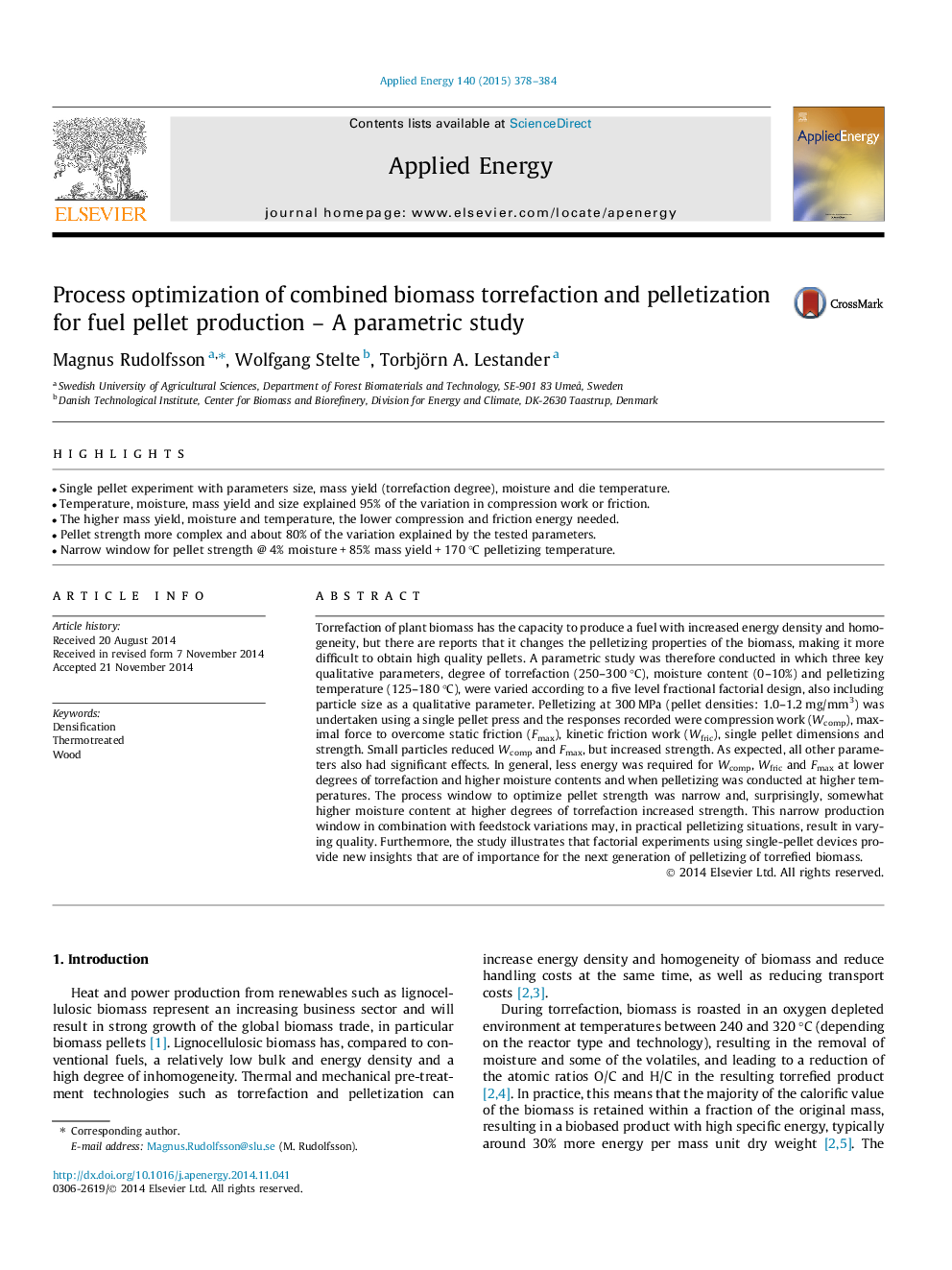| Article ID | Journal | Published Year | Pages | File Type |
|---|---|---|---|---|
| 6688050 | Applied Energy | 2015 | 7 Pages |
Abstract
Torrefaction of plant biomass has the capacity to produce a fuel with increased energy density and homogeneity, but there are reports that it changes the pelletizing properties of the biomass, making it more difficult to obtain high quality pellets. A parametric study was therefore conducted in which three key qualitative parameters, degree of torrefaction (250-300 °C), moisture content (0-10%) and pelletizing temperature (125-180 °C), were varied according to a five level fractional factorial design, also including particle size as a qualitative parameter. Pelletizing at 300 MPa (pellet densities: 1.0-1.2 mg/mm3) was undertaken using a single pellet press and the responses recorded were compression work (Wcomp), maximal force to overcome static friction (Fmax), kinetic friction work (Wfric), single pellet dimensions and strength. Small particles reduced Wcomp and Fmax, but increased strength. As expected, all other parameters also had significant effects. In general, less energy was required for Wcomp, Wfric and Fmax at lower degrees of torrefaction and higher moisture contents and when pelletizing was conducted at higher temperatures. The process window to optimize pellet strength was narrow and, surprisingly, somewhat higher moisture content at higher degrees of torrefaction increased strength. This narrow production window in combination with feedstock variations may, in practical pelletizing situations, result in varying quality. Furthermore, the study illustrates that factorial experiments using single-pellet devices provide new insights that are of importance for the next generation of pelletizing of torrefied biomass.
Keywords
Related Topics
Physical Sciences and Engineering
Energy
Energy Engineering and Power Technology
Authors
Magnus Rudolfsson, Wolfgang Stelte, Torbjörn A. Lestander,
